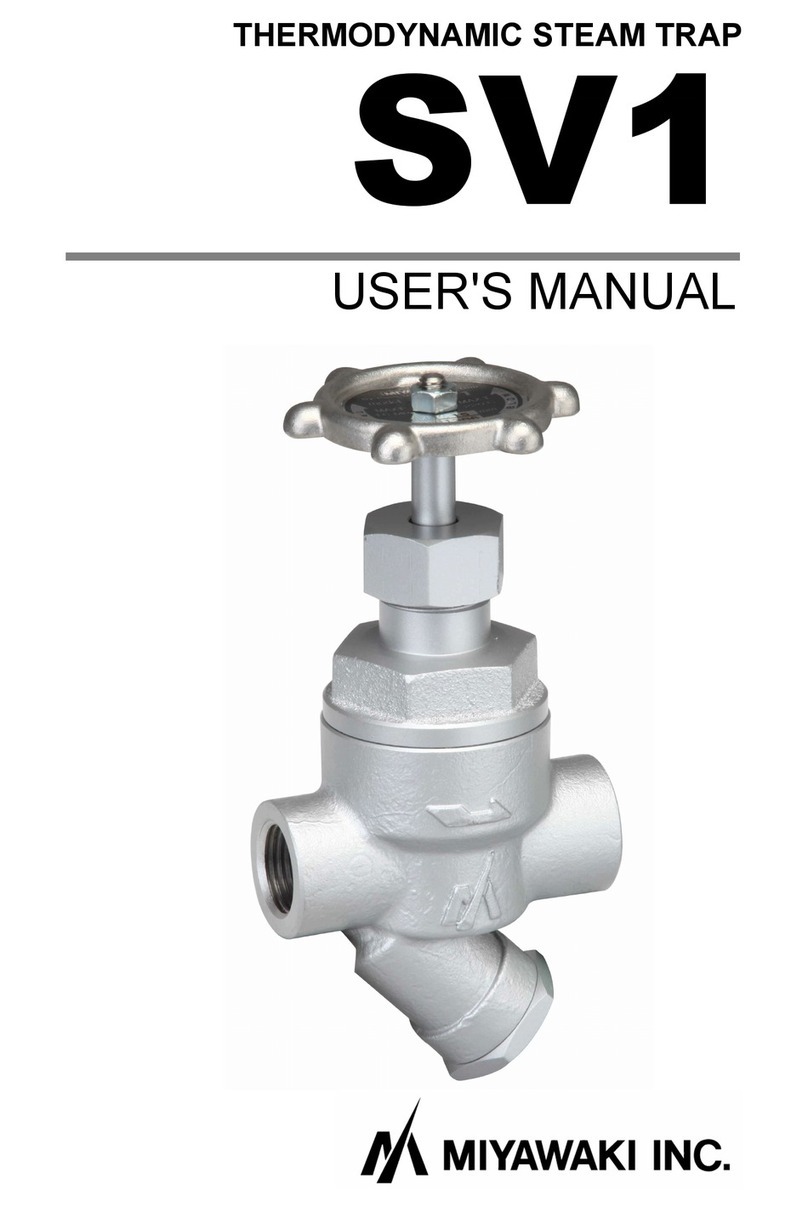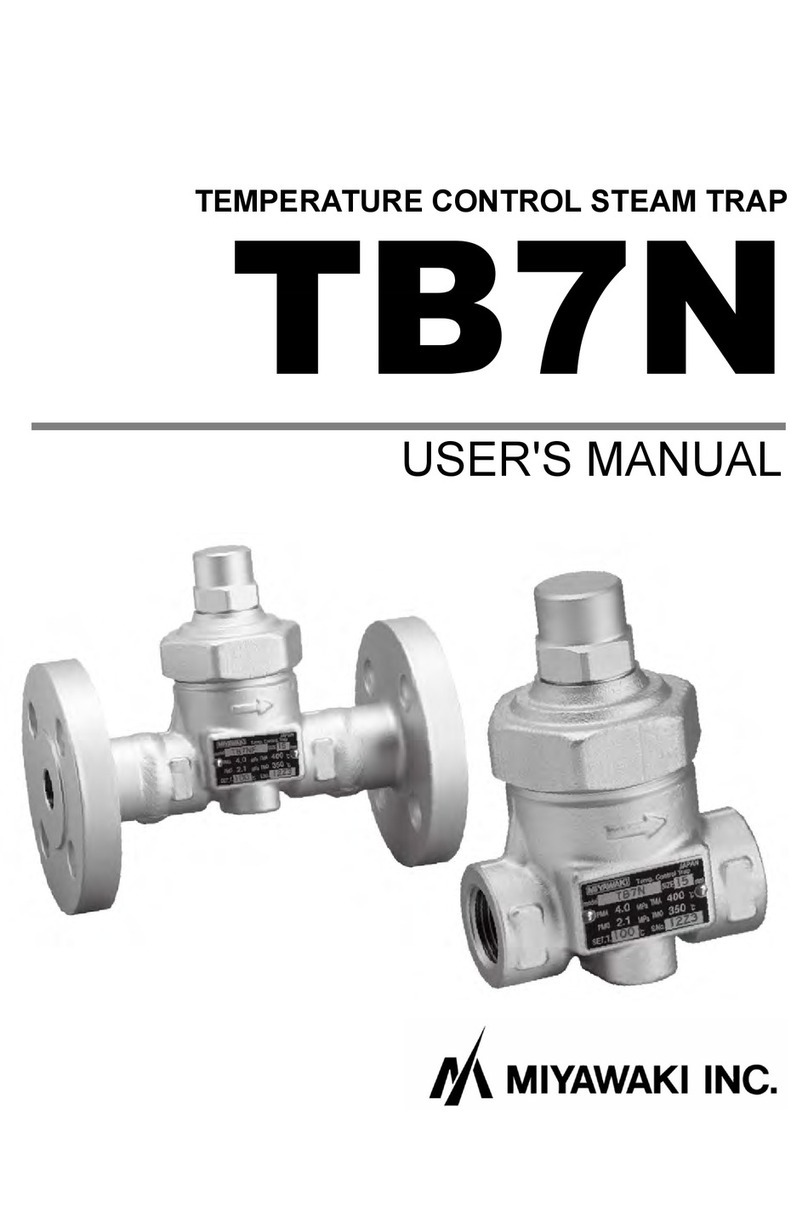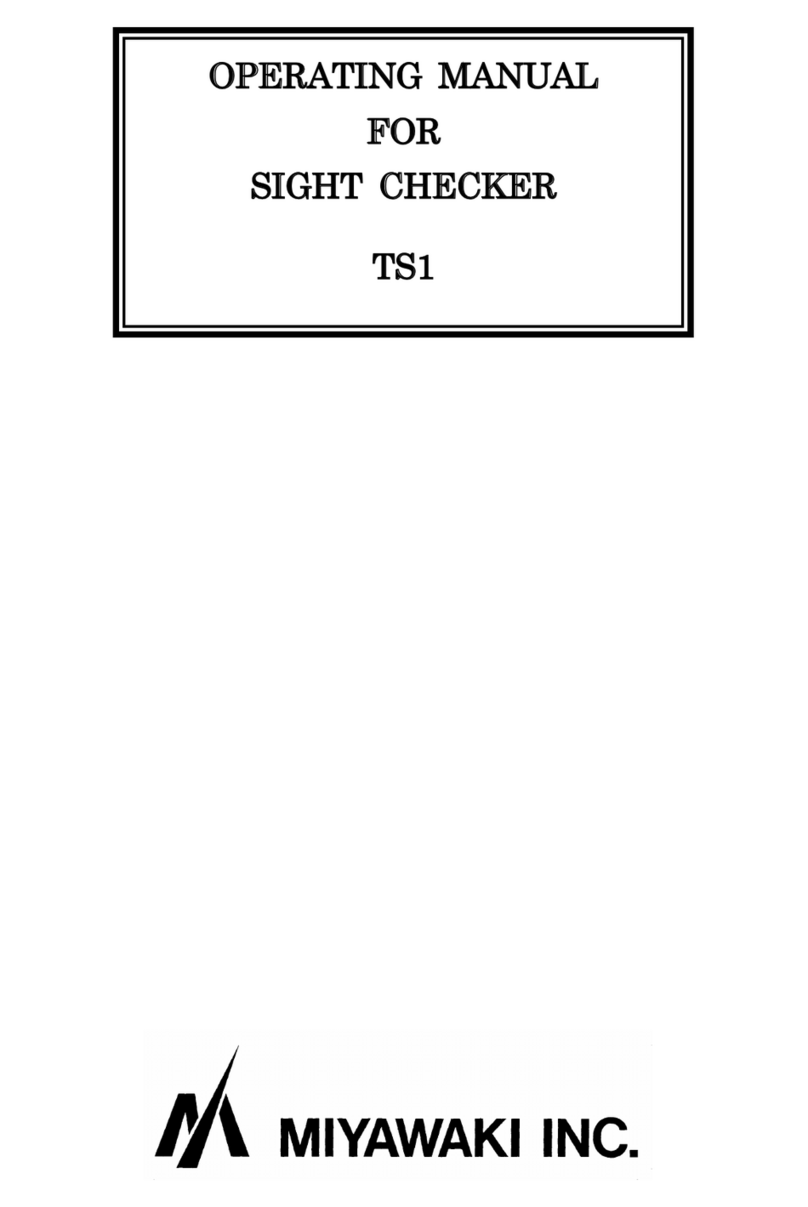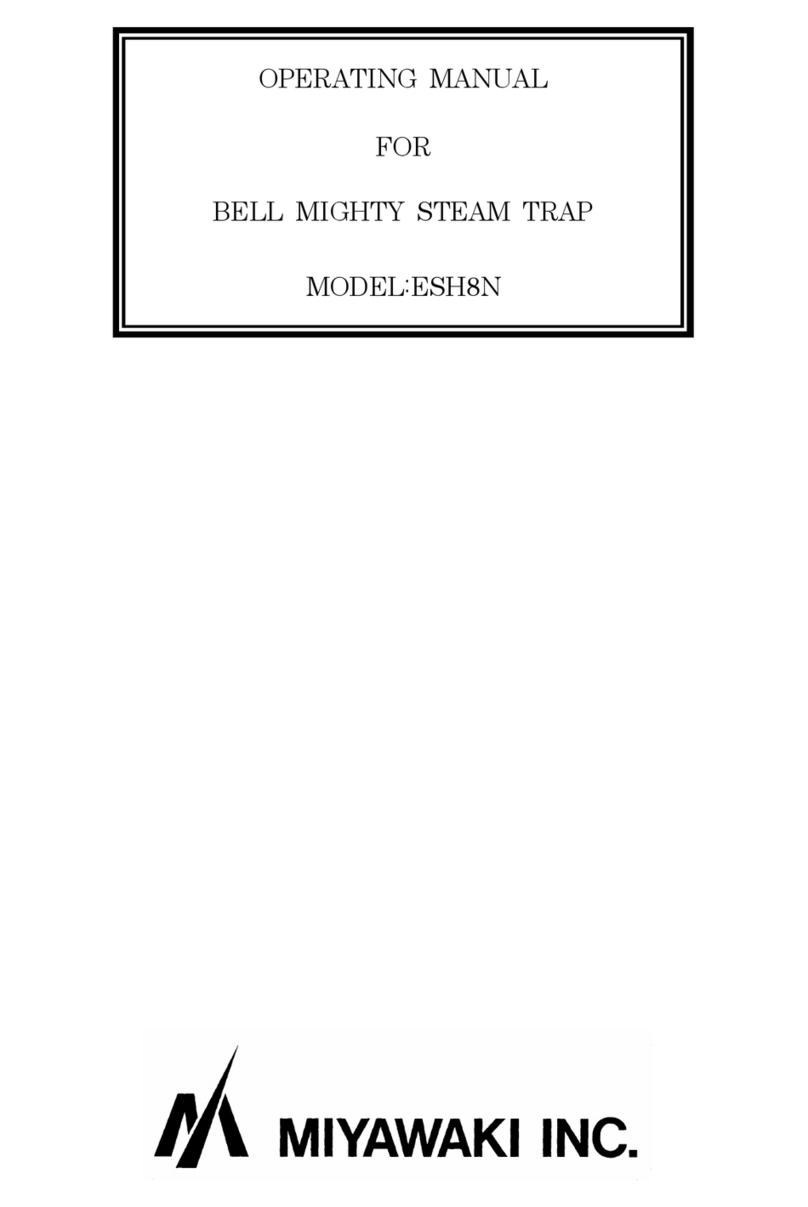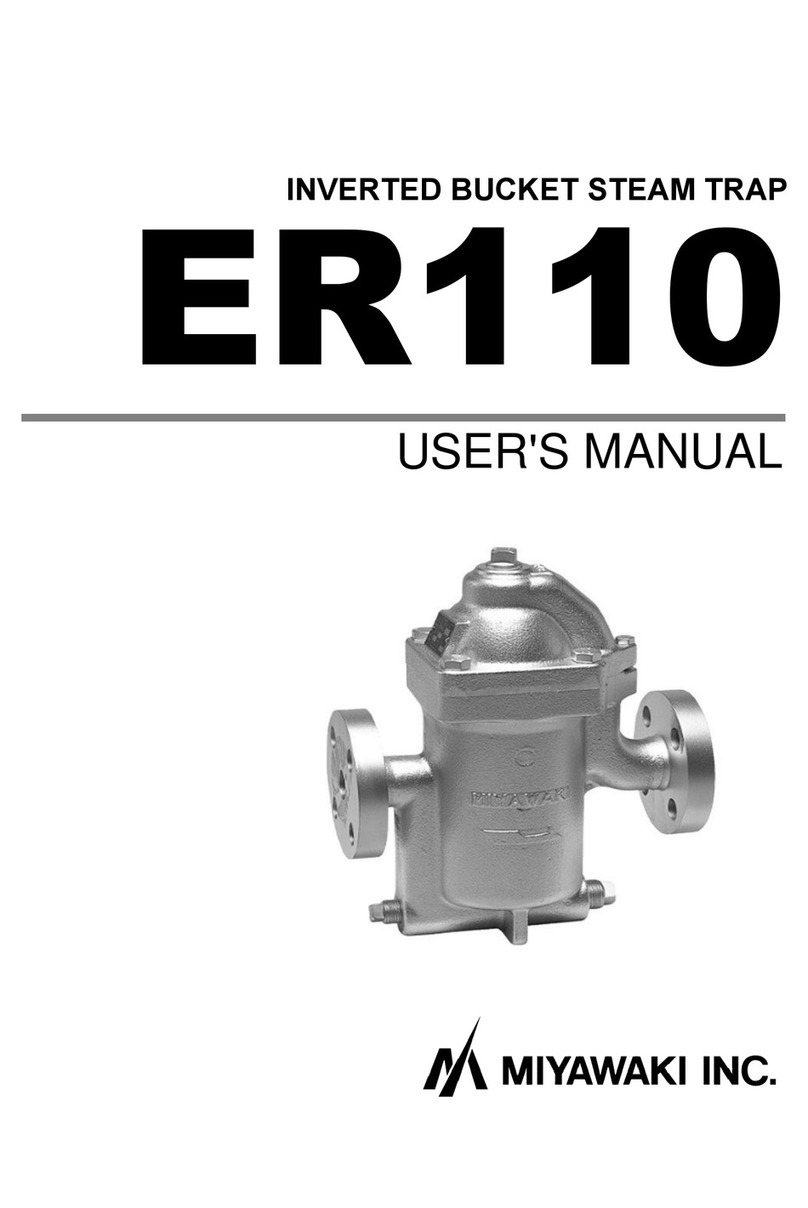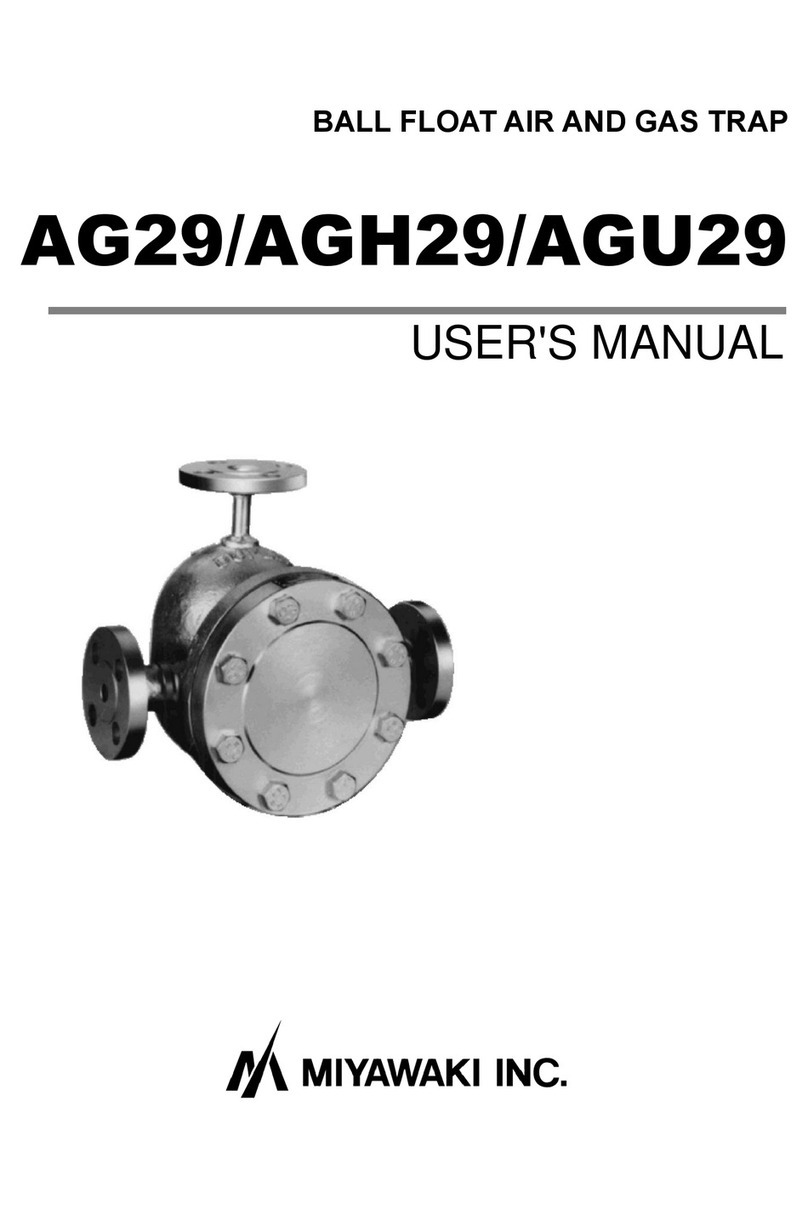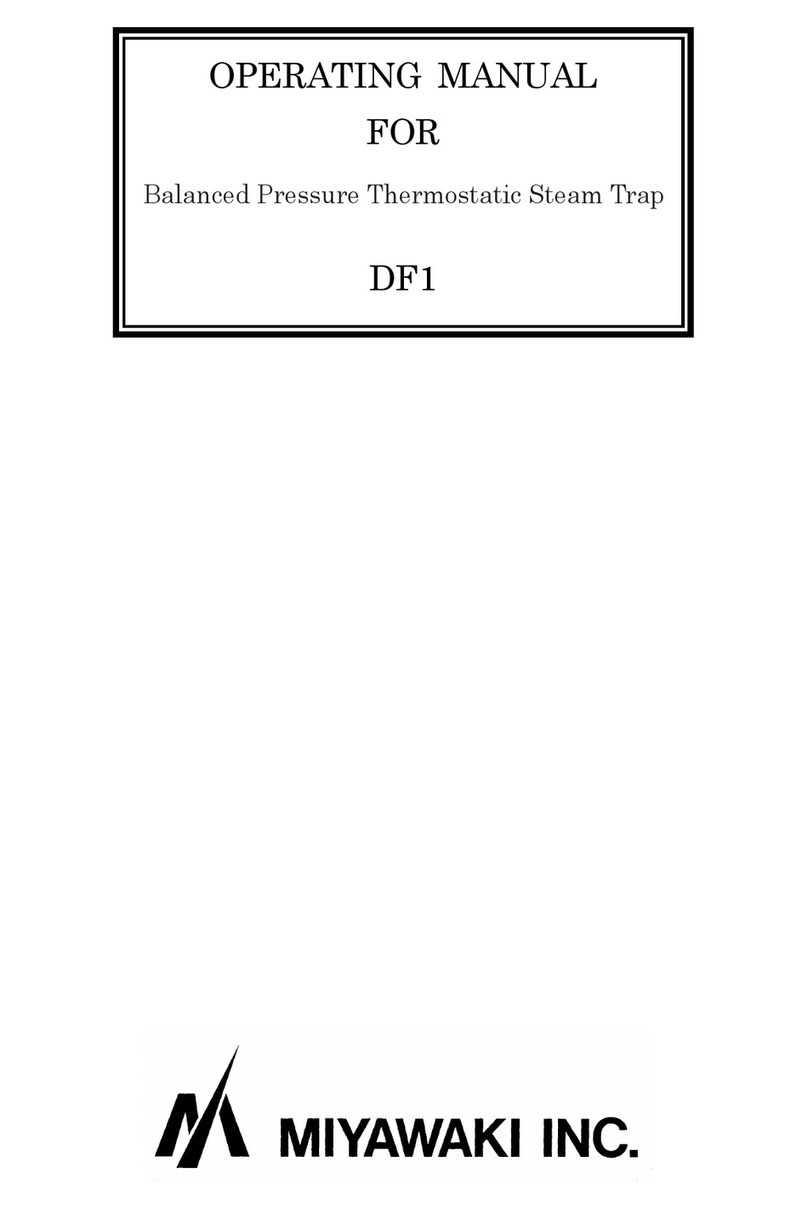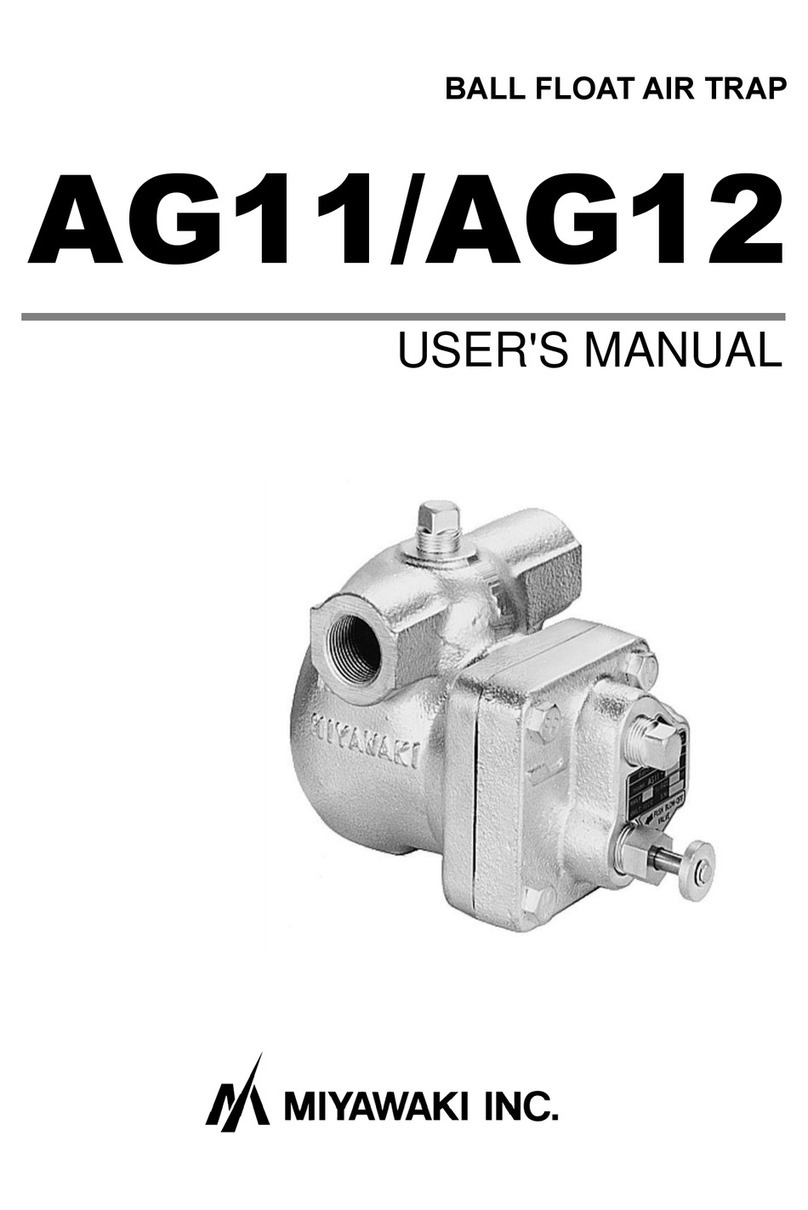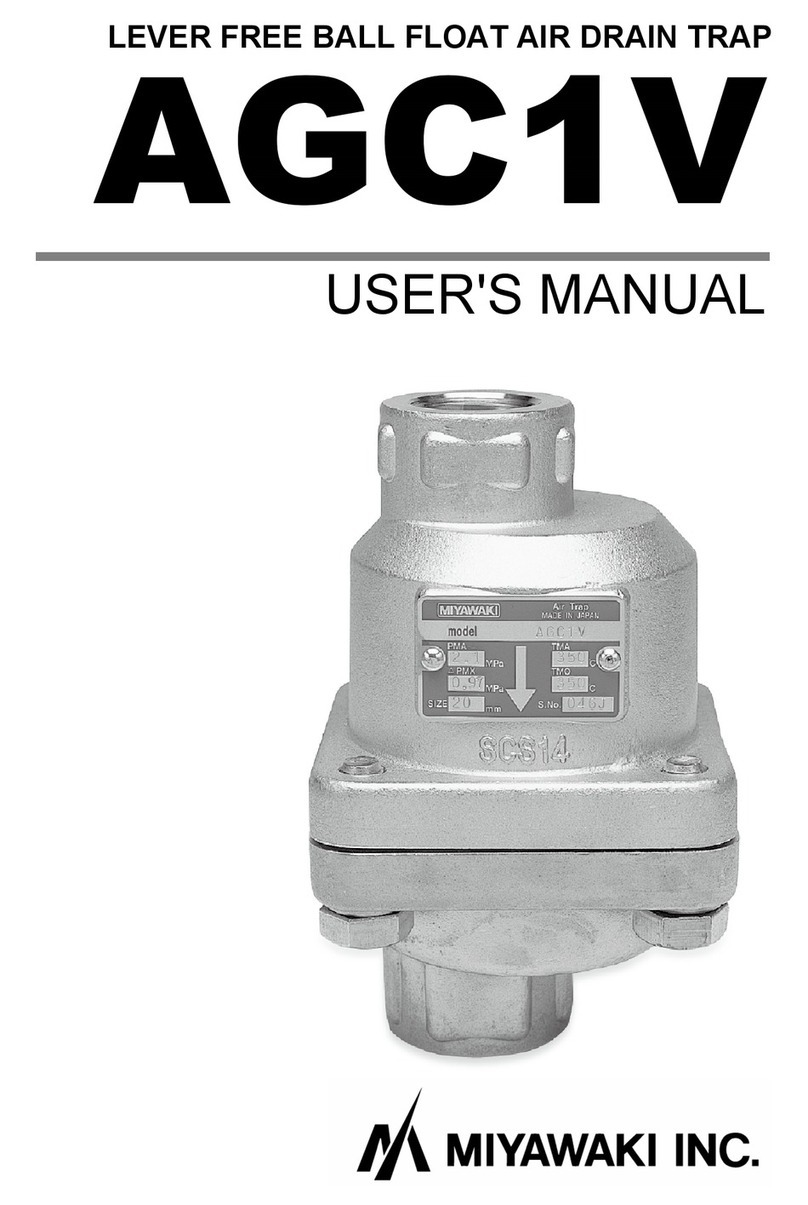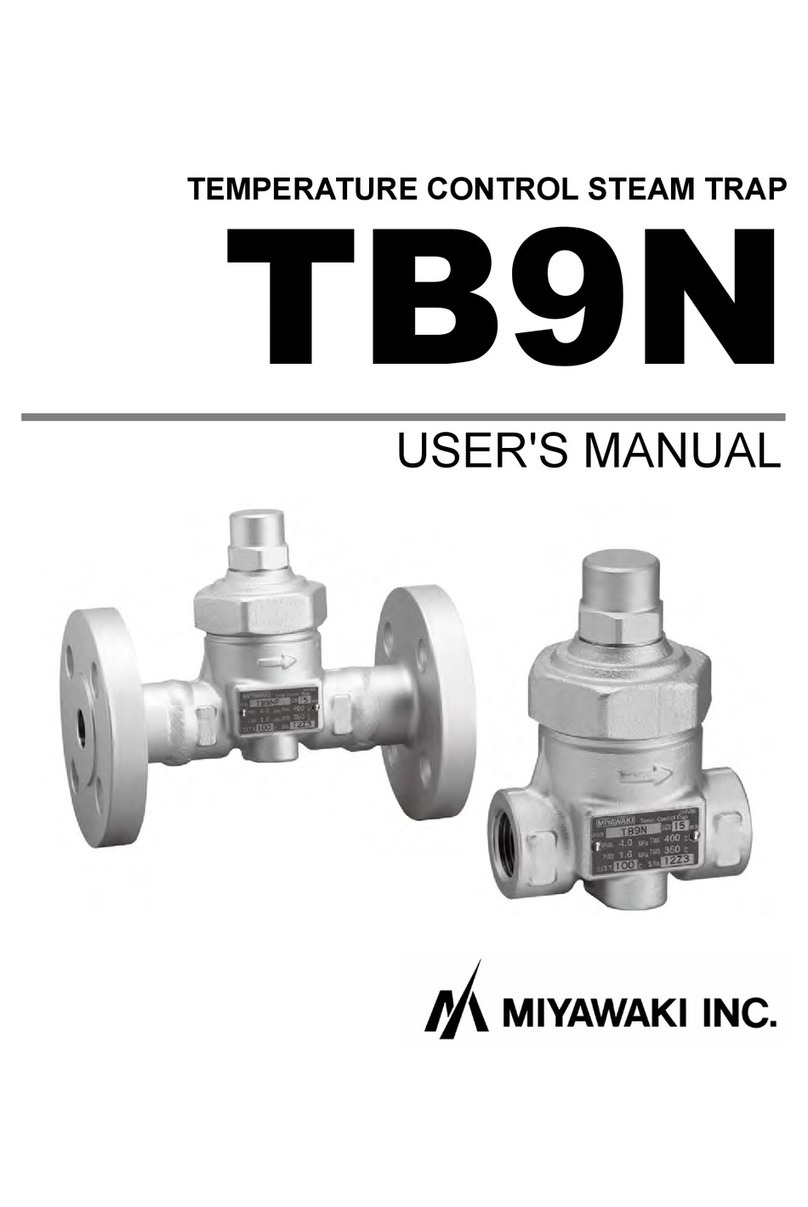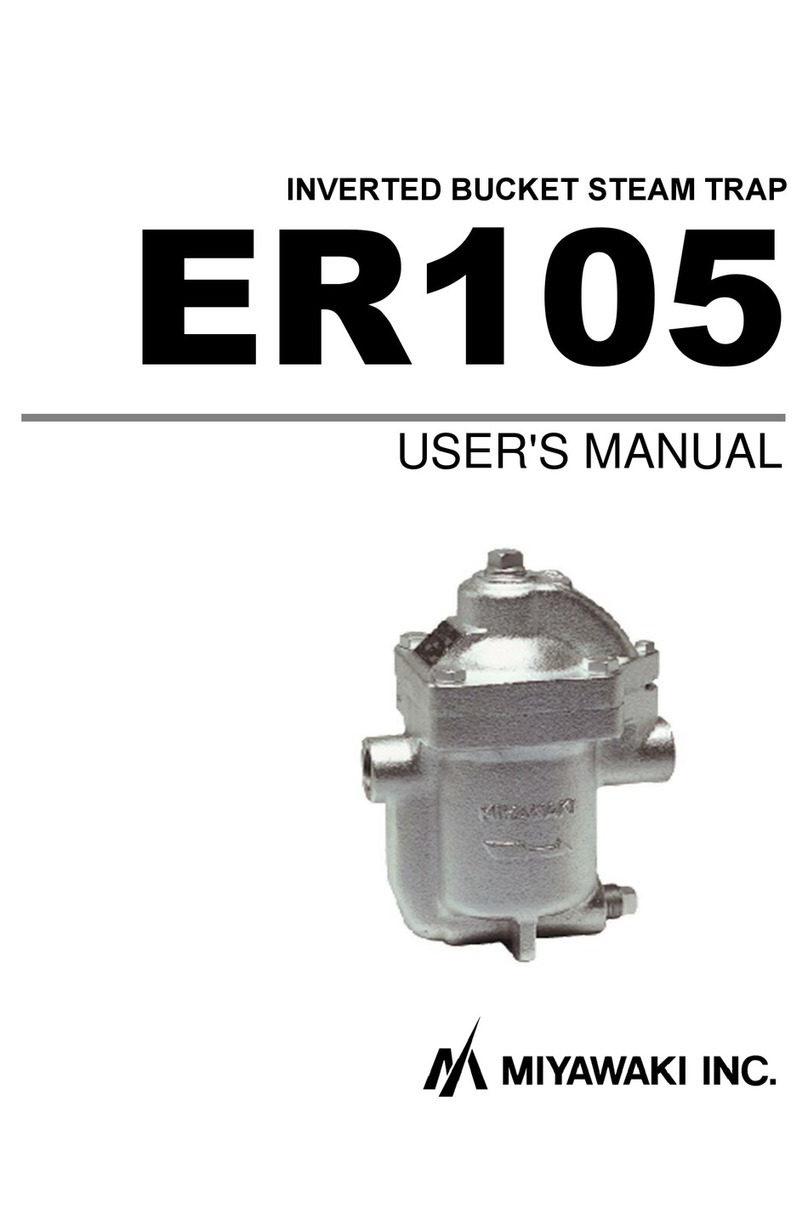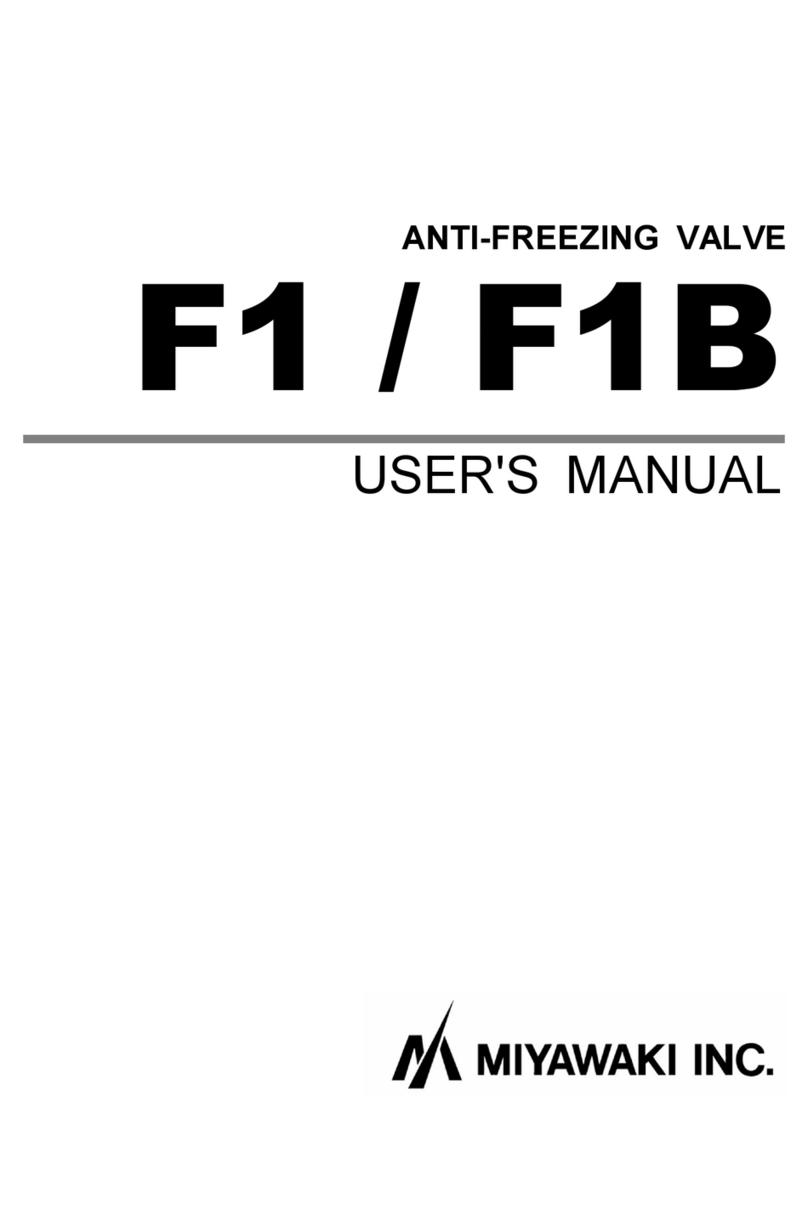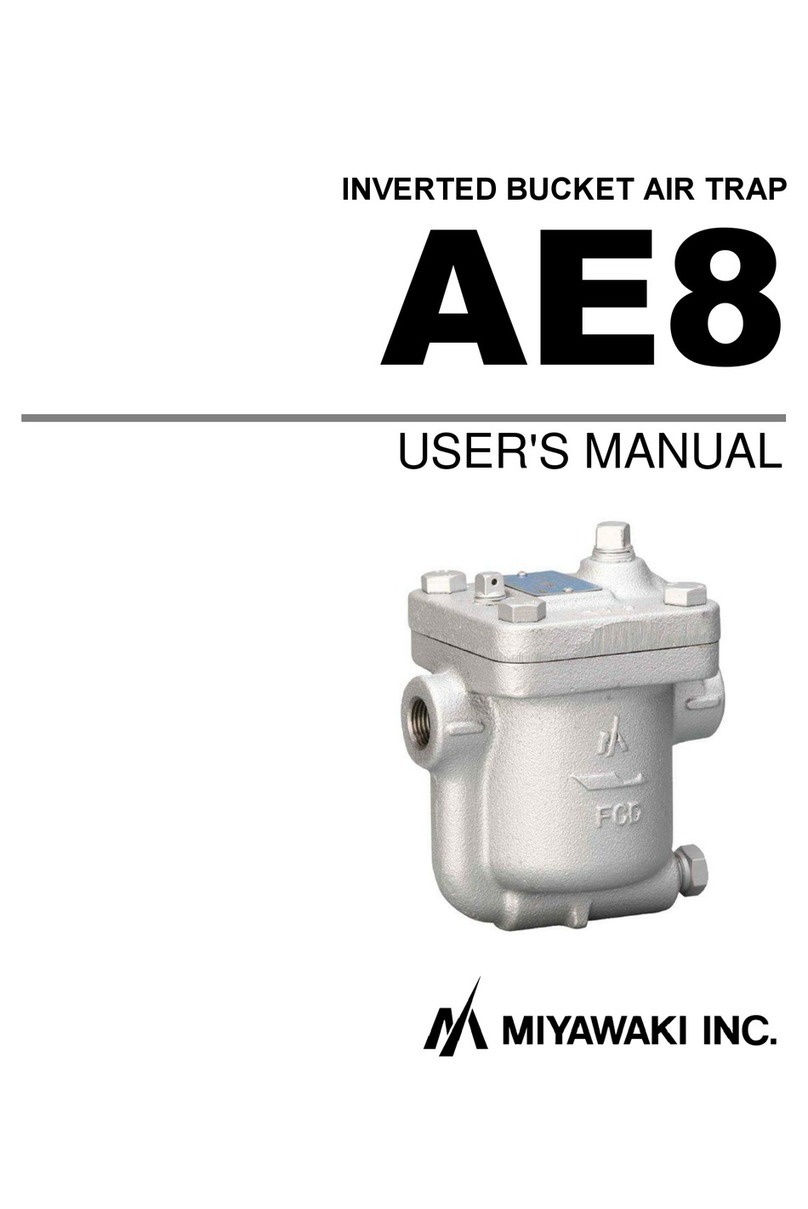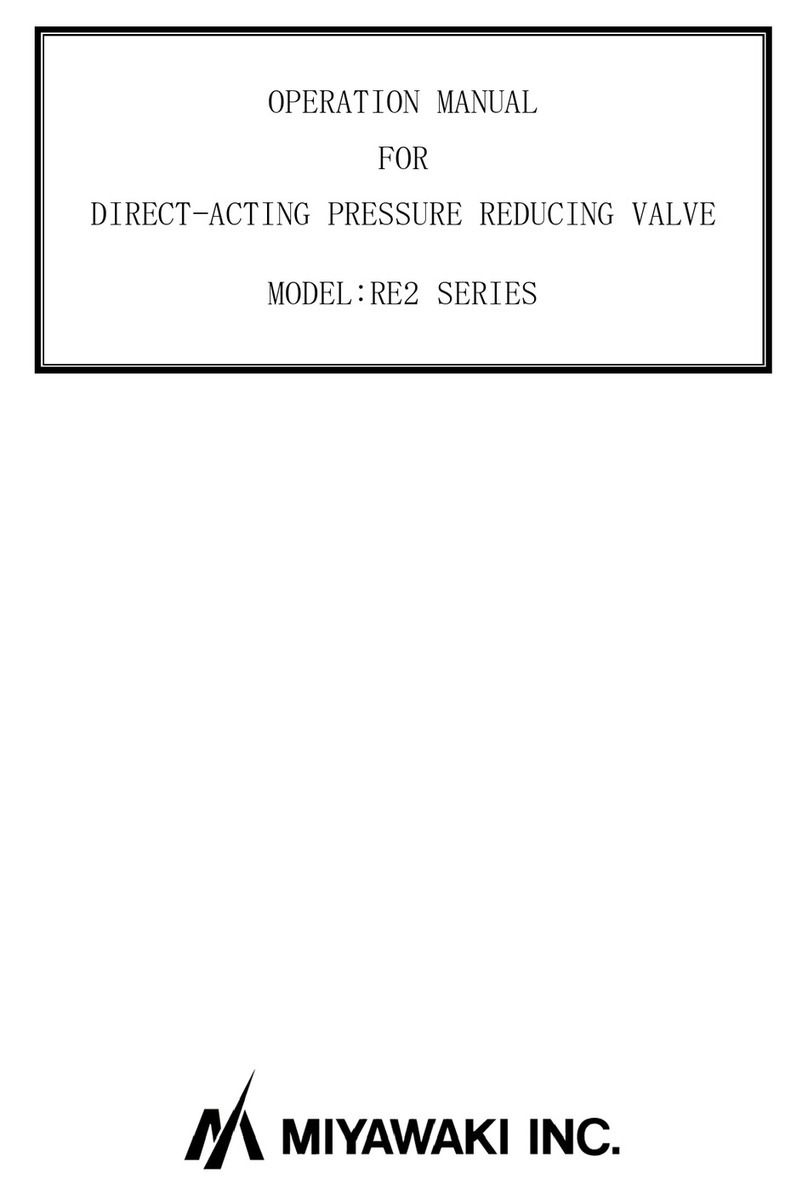
Before removing the trap from the pipe or disassembling it, be sure to close the
isolation valves. Then, release the residual pressure from the trap body (make
sure that the pressure in the main body is equal to the atmospheric pressure).
After it has fully cooled down (after the temperature of the main body has
reached ambient temperature), confirm for safe conditions and then begin to
work.
Even when the isolation valves are closed, there may be residual internal
pressure due to leaks from the isolation valves. Therefore, be very careful.
CAUTION
When replacing parts, make sure the replacement parts are supplied by
MIYAWAKI.
The performance of steam traps deteriorates gradually over time due to wear, corrosion
or dirt accumulating around the valve and the valve seat. Please conduct periodic
diagnosis of traps in order to keep steam control systems and equipment working well.
5.1 Tools for Diagnosing Steam Traps
Dr. Trap
Dr. Trap is a sophisticated steam trap management system for diagnosing steam traps
automatically by measuring the vibration and temperature of the steam trap. Survey
results are stored in the testing equipment and transferred to a steam trap analysis
software. The software aggregates and analyses steam trap survey data, identifying
faulty steam traps, providing steam loss and financial loss data, estimating CO2 emissions
corresponding to leaking steam traps and providing many other analyze possibilities to
manage the steam trap population easily.
Dr. Trap Jr.
Dr. Trap Jr. is an inexpensive and easily to handle steam trap diagnostic system
consisting of an ultrasonic checker, temperature probe and a sophisticated analysis
software. The software allows to determine the condition of a steam trap, to estimate
steam and financial losses and the related CO2 emissions.
For more details, please, check our homepage:
https://www.miyawaki.net/en/products/steam-trap-management-system
or ask our local representative.
